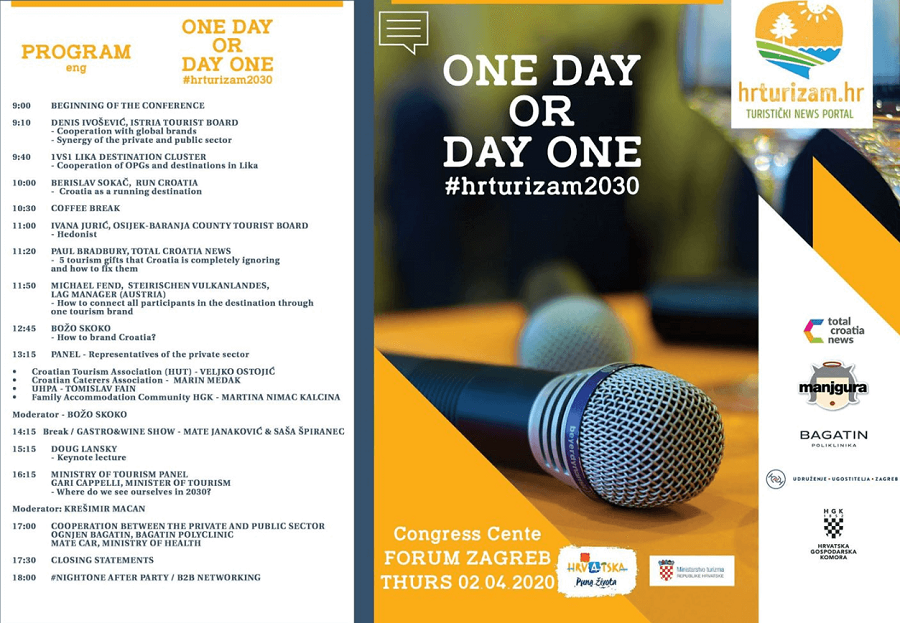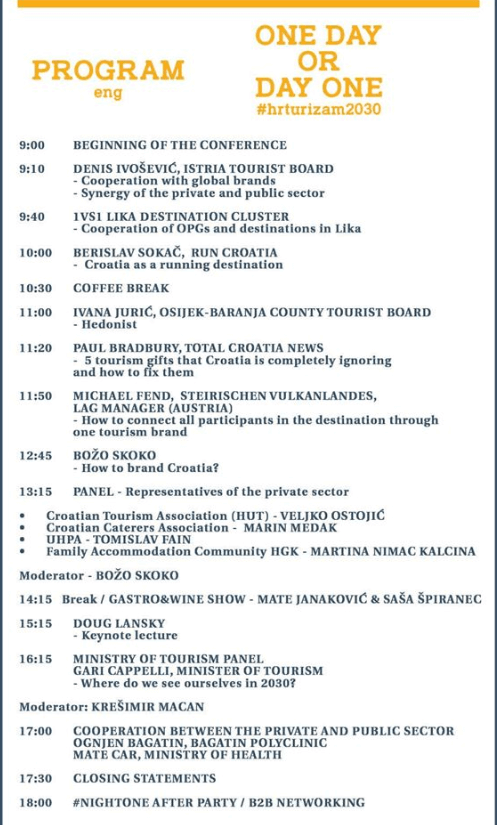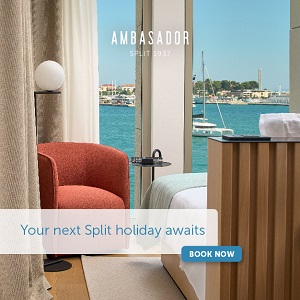Savica Heating Plant to Produce Electricity Using Flue Gas Thermal Energy
Why should the smoke just disappear into the wind when it can be turned into electricity? HEP has big plans for the unassuming Savica heating plant chimney next to the Sava river in Zagreb.
As Poslovni Dnevnik writes on the 17th of February, 2020, in this way, HEP wants to harness the thermal energy of waste flue gas from the Savica heating plant chimney, which is currently being released through the chimneys into the environment, and would also show the possibility of the alternative use of existing chimneys.
"One of those options is a process where a chimney is used as a plant for converting heat to electrical energy using an air booster effect," HEP explained to Vecernji list, which will soon announce a tender for a project worth around five million kuna in total. They detailed precisely what the job of the company that offers them the best deal for the Savica heating plant's chimney will be.
“A thermal power plant is a type of power plant that uses heated air buoyancy and the height difference of the tower to launch an air turbine and generate electricity. The flue gases inside the chimney have a lower density than the surrounding atmospheric air. This establishes a pressure difference between the gases inside the chimney and the surrounding air, resulting in the flow of lighter flue gas from the bottom to the top of the chimney. The greater the difference in pressure - the greater the volume flow of the mixture of ambient air and flue gas,'' they explained from HEP, adding that the flue gas temperature at the inlet to the chimney is about 150 degrees celsius and, therefore, it has a relatively high thermal potential.
This heat, they explain, is currently only used to achieve flue gas build-up, that is, to create a vacuum in the chimney. And there are two main ways, as they say from HEP, to harness the energy of flue gas buoyancy. One is the installation of a wind turbine in the centre of the lower part of the Savica heating plant chimney itself.
"In order for this solution to be implemented, it's necessary to undertake a quality analysis of the equipment that can potentially be installed," they say from HEP, stating that electricity can also be produced by entering the main flue duct and erect a new branch of the channel to house a wind turbine. That new duct would be fused at a 45-degree angle to the existing one in order to reduce local flow resistance.
"This would mix ambient air into the main flue gas stream. The air flow is proportional to the pressure exerted in the main flue duct. The flow through the wind turbine or channel branch will be regulated by movable control flaps. This will also regulate the temperature of the mixture of flue gases and air entering the chimney, that is, the pressure created by that buoyancy,'' HEP Production explained in detail.
A future designer will have to do a study in which they will analyse the possibilities of creating one of these ideas within the Savica heating plant's chimney.
When exactly the chimney of the thermal power plant located next to the Sava could start producing electricity will depend on the design of the project itself and then on the execution of the works.
Make sure to follow our dedicated business page for more.
United Tourist Boards a Hvar Cycling Hit at Cosmo Bike Show in Verona
February 17, 2020 - The newly united Hvar tourism boards present their cycling credentials at the Cosmo Bike Show in Verona.
Even though I no longer live on Hvar, I follow island life closely and still very much enjoy my three mandatory visits - Easter, summer and the family olive harvest in November.
And it is nice to see how things are slowly changing for the better in many ways, and how some initiatives are starting to pay off.

The main reason that the Total Project started way back in 2011 as Total Hvar was because the tourist infromation was terrible and the five island tourist boards acted independently and very rarely worked together. It has been a process to get there, but it is great to see that not only was Hvar one of the first clusters of tourist boards to unite as one Destination Management Organisation but that that partnership is really working. Joint promotion of the island of one umbrella may seem logical to the outsider, but it rarely happens in practice in Croatia.
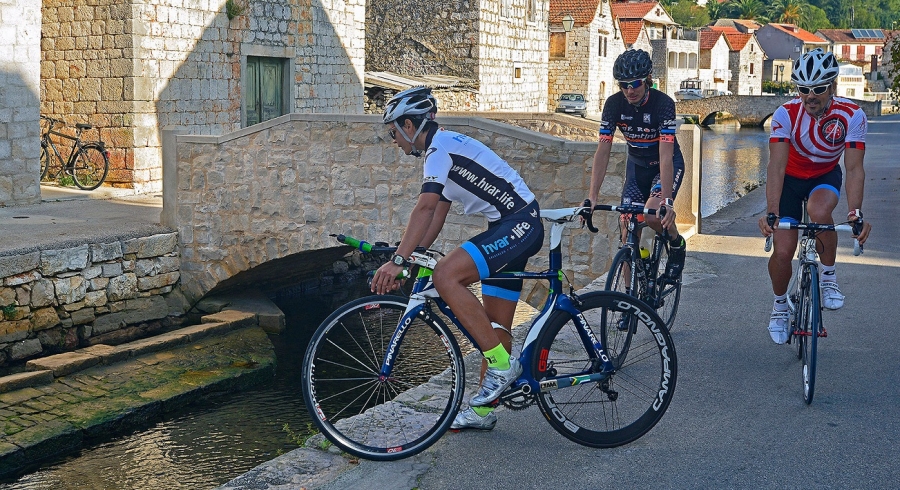
The cooperation is already working well and was on show last week in Verona, as the island presented its joint cycling credentials at the Cosmo Bike Show, where some 15,000 people visited the Croatian stand.
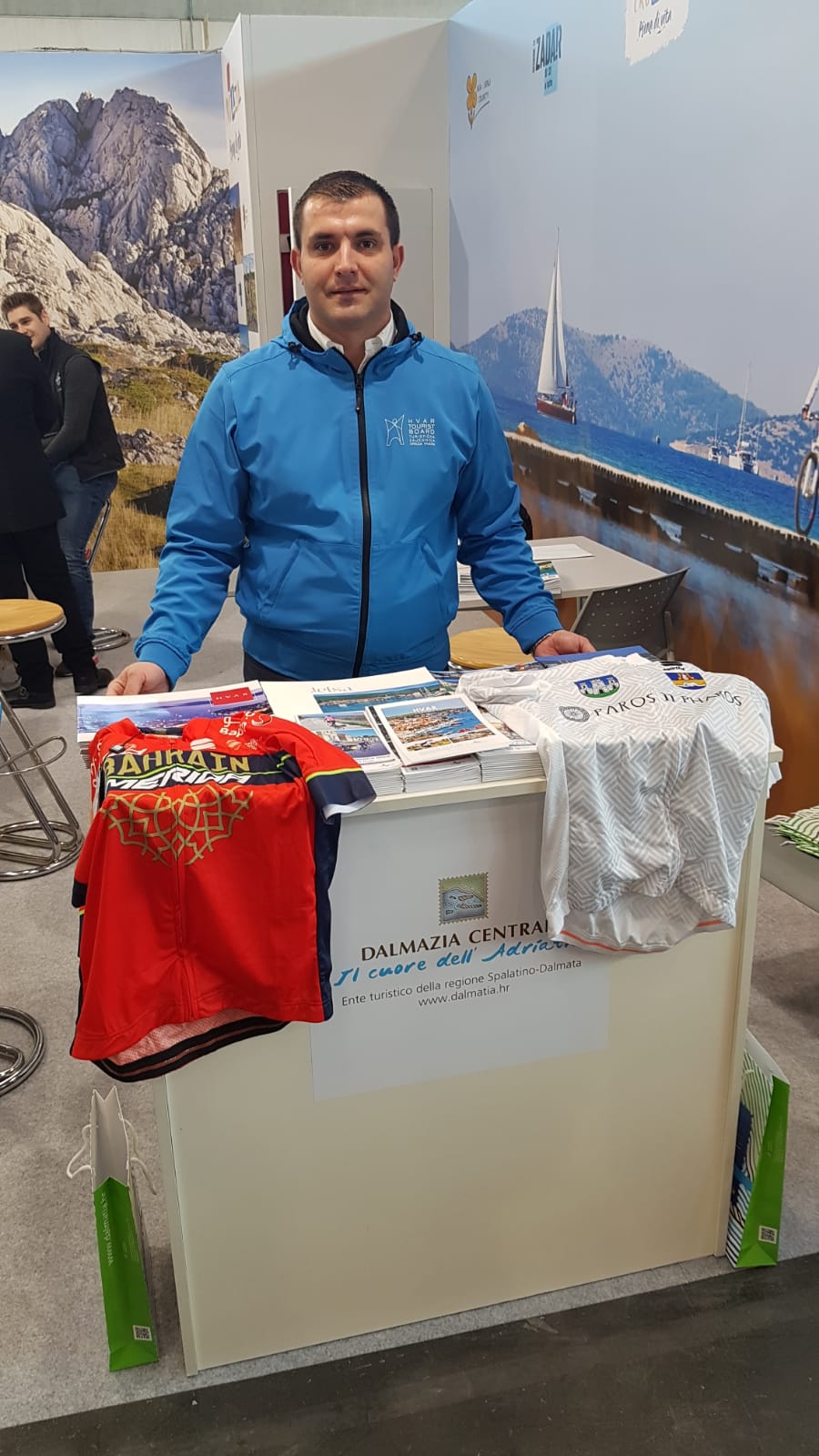
"On the Italian market Hvar is an absolute hit this year, which is shown by more than 15000 visitors of the Croatian stand at the Cosmo bike show in Verona. And we are proud to promote Hvar bike tourism product with all Hvar tourist boards as one," said Petar Razovic, director of the Hvar Town Tourist Board.
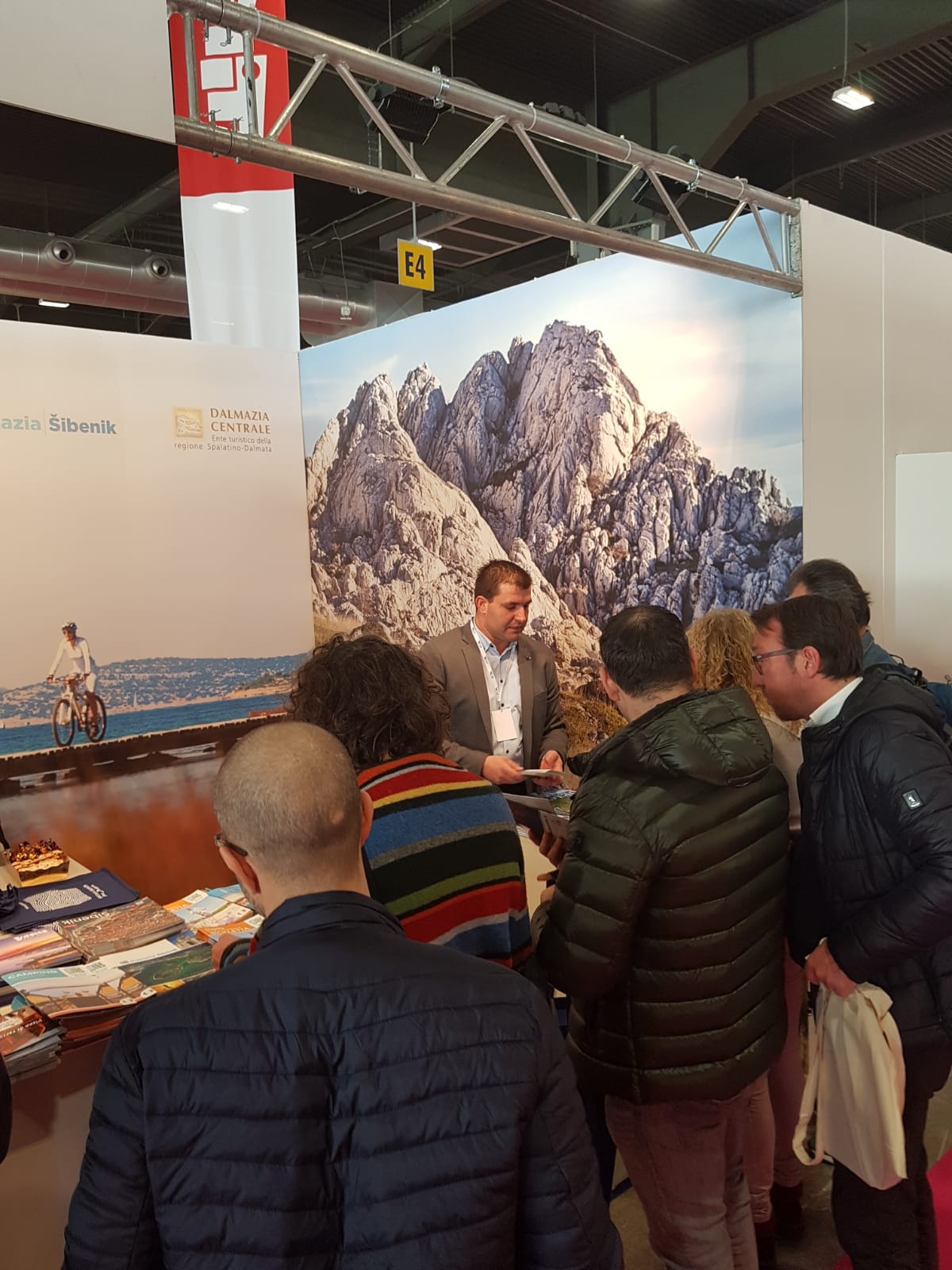
The development of cycling tourism on Hvar has been part of a coordinated attempt to prolong the island's season and to diversify its product beyond the stereotypical sun, sea and nightlife summer season.
It is a strategy that has taken a few years to develop, but one which is beginning to pay dividends, thanks to the efforts of various island stakeholders.
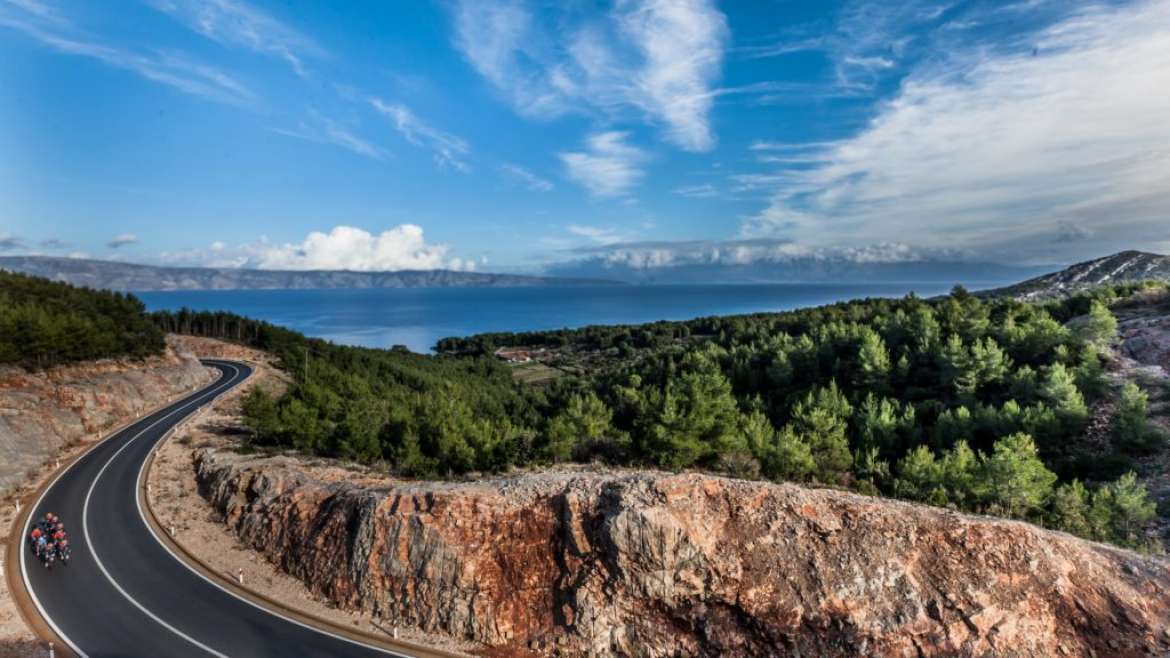
By far the biggest coup in this strategy has been the arrival for the last three years of Bahrain Merida (now renamed Bahrain McLaren), one of the biggest names in the sport, who have chosen Hvar for their winter training for the past three years.
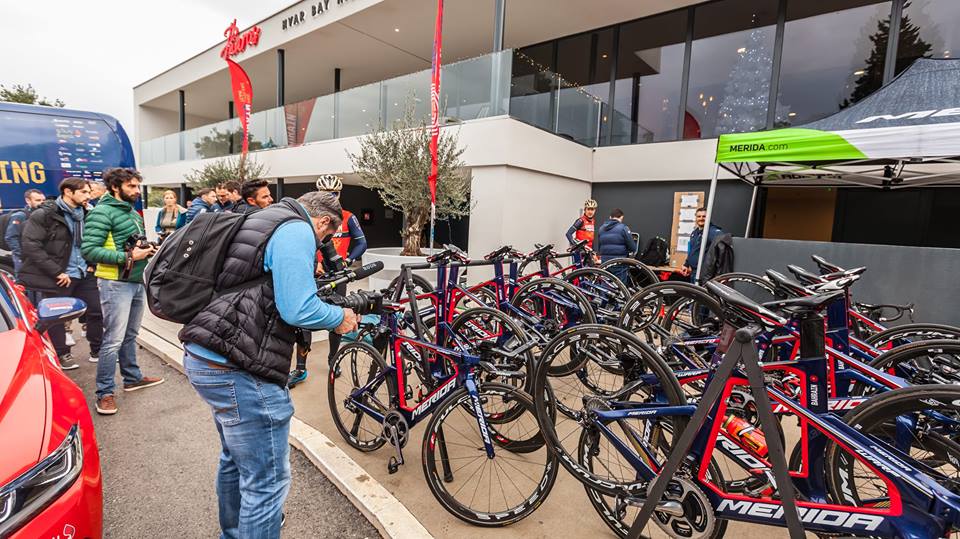
A key part of the strategy has been the opening of the first dedicated bike hotel on the island, which was properly road-tested by the team from Bahrain, as 75 members of the team stayed at Pharos, hvar bayhill hotel during their first stay - here is an overview of the international cyclists putting the bike hotel through its paces.
The tourist board has developed a series of bike maps over the last few years, as well as marked trails, both for regular and MTB biking, and if you want to see true beauty and tranquiliity, I recommend you try the road right on top of the island - stunning. In addition to the official bike routes, plenty of enthusiasts are adding their own suggested routes.
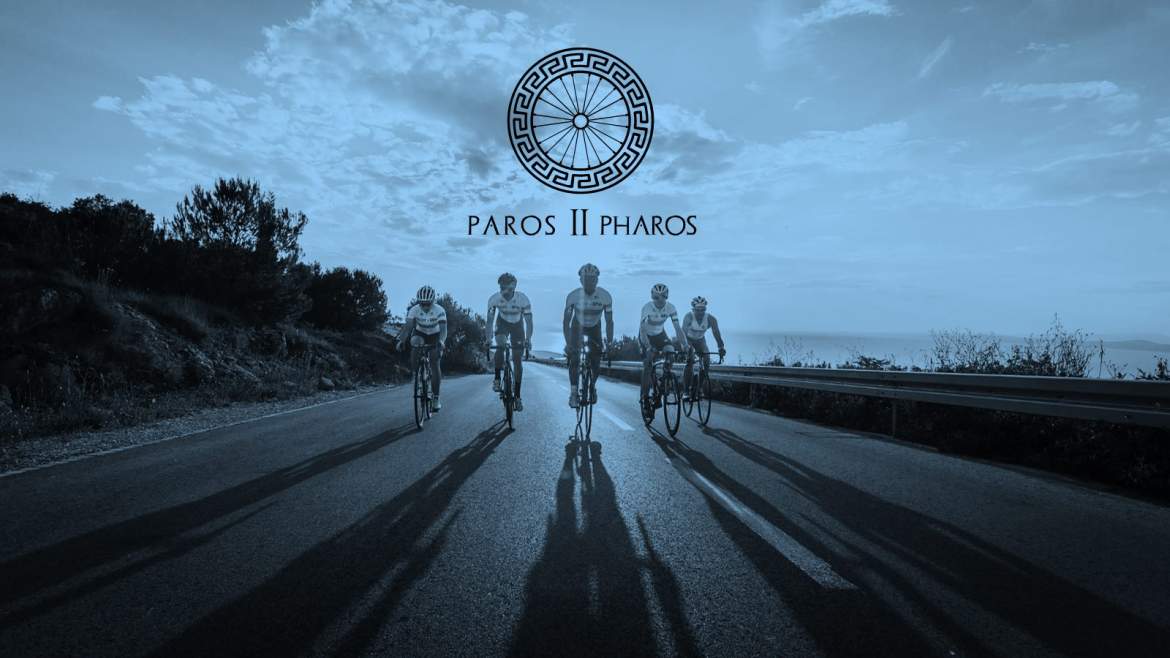
The international promotion of Hvar cycling has taken on several other aspects, including last year's successful Paros II Pharos cycle, which connected Hvar with the island of Paros in Greece, some 2,400 years after the Ancient Greeks from Paros first colonised Hvar.
And with more than 4,4 million views on YouTube of the official Central Dalmatia promotional video of Brac and Hvar cycling, the message continues to spread.
To learn more about the island, check out the Total Croatia Hvar in a Page guide.
Flights to Croatia: AirBaltic Boosts Rijeka, Aer Lingus Reinforces Cork-Dubrovnik
February 17, 2020 - The latest news from around Croatia’s airports for new flights to Croatia with updates from Rijeka, Dubrovnik, and Zadar.
Avio Radar reports that Latvian national carrier AirBaltic has announced that is will reinforce the new route from Lithuania to Rijeka - Vilnius-Rijeka, which has already been scheduled for one flight per week, on Thursdays, with traffic starting in May this year.
However, the airline has strengthened the new route before it has even launched, with an additional second flight per week, on Saturdays, from June 6 to September 26, 2020. The Airbus A220-300 will service this line.
Furthermore, Avio Radar adds that Irish national carrier Are Lingus will strengthen the Cork-Dubrovnik route in the 2020 summer fight schedule. The line first began operating last year with two flights a week, on Tuesdays and Saturdays.
In the peak season, the third flight per week has been introduced, on Thursdays, from July 2 to August 27. An Airbus A320 aircraft will fly on this line.
Finally, Avio Radar reports that German low-cost carrier Eurowings will fly four flights from Germany to Zadar instead of Split over the next two weeks. This is because of the reconstruction of the runway in Split.
Thus, Eurowings has decided to divert all its lines to Zadar from February 17 to March 1, 2020. Tickets for all diverted routes from Dusseldorf, Cologne, Munich and Stuttgart to Zadar are on sale in booking systems.
Recall, Avio Radar reported last week that regular international flights from Zagreb to Sofia are scheduled from May 1 to the end of October this year. This service will run three times a week, on Mondays, Wednesdays and Fridays, and will operate using the 76-seater Dash 8-Q400 aircraft.
Two days later, on May 3, 2020,regular international flights on the Zagreb-Podgorica route will be introduced on Tuesdays, Thursdays, and Sundays. Flights will also be operated by the Dash 8-Q400 aircraft. As of today, return airline tickets are sold on both routes.
Compared to the last tourist season, where Croatia Airlines had a fleet of 14 aircraft (12 of their own and 2 chartered CRJ 1000 aircraft), they will enter this season with one additional aircraft. Based on a long-term dry lease, the fleet will include a 150-seat Airbus 319 in late March and an additional 76-seat Dash 8-Q400 in late April to support unplanned traffic disruptions. In addition, from April to October, a short lease (wet-lease) of one CRJ 1000 aircraft by the Spanish air carrier Air Nostrum is also planned.
To read more about travel in Croatia, follow TCN’s dedicated page.
HDLU Launches New Art Project in Prisons
ZAGREB, February 17, 2020 - After successfully implementing the projects "Exemplary Penitentiary" at the Požega Penitentiary and "Art Revitalisation of the Prison Space" at the Zagreb Prison, the Croatian Association of Artists (HDLU) has announced the start of the project "The Horizon of Freedom" at the Glina Penitentiary and the Zagreb Prison Hospital.
At the Glina Penitentiary the prisoners and artists will paint a joint mural, and there will also be art workshops for prisoners. Two art interventions are planned for the Zagreb Prison Hospital as well.
Previous projects have shown that art has a truly transformative power. It contributes to creating a new, more humane, supporting and nurturing environment, it creates conditions for developing awareness, responsibility and empathy in prisoners, and it helps them to develop skills and live a more meaningful and productive life, the HDLU reports.
The project "The Horizon of Freedom" has a similar aim - to continue with the artistic and therapeutic practice of intervention within the Croatian prison system, with emphasis on the aestheticization of the prisoners' living space and the work space of prison officers, as well as on involving prisoners in the creative process and discussions about art, changes in space and in the individual inhabiting that space.
The project "The Horizon of Freedom" by Melinda Šefčić was selected through a public tender by the Ministry of Justice and will be financed with 200,000 kuna. The accompanying research will be done by Anita Jandrić Nišević and Melinda Šefčić.
More art news can be found in the Lifestyle section.
Reviving European Prospect for SE Europe Will Be Croatian Presidency's Big Legacy
ZAGREB, February 17, 2020 - Raising the topic of enlargement to Southeast European countries to the highest level in the EU and changing the atmosphere about it will a big, positive political legacy of the Croatian presidency of the Council of the EU, Croatian Prime Minister Andrej Plenković said in Brussels on Sunday.
As premier of the country presiding the Council, he attended an informal working dinner of European Council President Charles Michel, European Commission President Ursula von der Leyen and EU High Representative for Foreign Affairs and Security Policy Josep Borrell with the leaders of Croatia's six Southeast European neighbours which are candidates or potential candidates for EU membership.
The meeting was held as part of preparations for a summit of leaders of all EU member states leaders and Western Balkan countries in Zagreb on May 6-7.
Plenković described the meeting as very good and timely. "We positioned the topic of Southeast Europe high on the agenda of EU institutions," he said, adding that Greece, Austria and Italy had announced such preparatory meetings prior to the Zagreb Summit.
"This means that we have mobilised EU member states about this topic to a level that didn't exist. Most important for us before the Zagreb meeting is to resolve the issue of the opening of negotiations with North Macedonia and Albania, and we will try to have that decision adopted in March."
Plenković said he wanted the Commission to present in Zagreb a strong investment package for Southeast Europe, that summits between the EU and the countries in that region be held at least every two years, and that those countries gradually meet membership criteria and raise their citizens' living standards on the membership journey. "That will be a big, positive legacy of the Croatian presidency of the Council of the EU for our six neighbouring countries."
Plenković said that next week, at an EU27 summit, he would talk which the prime ministers of Denmark and the Netherlands, which had reservations in October regarding the opening of negotiations with Albania. France, which had the strongest objections, has changed its position after the Commission put forward a new accession negotiations methodology.
Plenković said that during Croatia's EU presidency he would also try to solve the visa liberalisation issue for Kosovo citizens. "Croatia believes Kosovo has met the criteria for waiving visas. There are several countries which don't share that view but I believe that, in intensive negotiations within the Council and in a generally better atmosphere, we could find a solution to an important issue for Kosovo citizens."
Prior to the meeting, von der Leyen said it was in the EU's geostrategic interest to have the closest relations possible with Western Balkan countries, confirming that the Commission was preparing an investment package for the region for the Zagreb Summit.
Michel said he expected honest, open and constructive talks on partnership with the leaders of the six Western Balkan countries.
More news about Croatia and the EU can be found in the Politics section.
Michel's Draft EU Budget Has Positive Elements for Croatia
ZAGREB, February 17, 2020 - Croatian Prime Minister Andrej Plenković on Sunday described European Council President Charles Michel's draft EU 2021-27 budget as an attempt at a compromise that still needed a lot of work, saying he was pleased the draft took into consideration Croatia's most important demands.
"I think Michel tried to find a compromise, but there will still be many difficult and demanding negotiations this week," he said in Brussels.
On Friday, Michel proposed a €1,094 billion budget for the EU in the 2021-27 period, which is 1.074% of the 27 member states' gross national income. The European Commission has proposed a €1,135 billion budget (1.114% of the GNI).
Although Michel is proposing less funds for the cohesion policy than the Commission and in relation to the 2014-20 budget, he is proposing a somewhat different distribution between poor and rich regions. Regions whose GDP is above 75% of the European average would receive more money and those whose GDP per capita is above 100% of the European average would lose €7 billion.
Croatia's two statistical regions, Adriatic Croatia and Continental Croatia, are below 75% of the European average. As of 2023, Croatia will have four statistical regions. Three will remain below 75% of the European average while the City of Zagreb GDP is above it.
Michel's proposal clearly reflects two demands which Plenković has been underlining in the EU budget negotiations - to consider the fact that Croatia is the youngest member state which has utilised only one seven-year EU budget and to take account of the population losses in a number of the member states, including Croatia.
Michel's proposal envisages a separate paragraph for Croatia which says that less developed regions in the member states which utilised only one cohesion policy programme period are entitled to an additional allocation of €300 million for their least developed regions. Only Croatia fits this description. The proposal also envisages additional funds for countries with big population losses.
"That paragraph is the fruit of our talks and the interpretation of the status Croatia has as the youngest member state. We also included the population issue which, after Commission President Ursula von der Leyen, was also acknowledged by... Michel, meaning that there are member states which have the problem of a part of their citizens leaving for more developed member states and therefore it's necessary to find adequate funds for the population policy," Plenković said.
He reiterated, however, that there was still a lot of work before a favourable agreement on the next EU budget was reached. "But we are on the right track, we will negotiate more, we have work to do and Croatia and its citizens deserve to have adequate funds also in the next seven years because that was the point of our EU membership."
More news about Croatia and the EU can be found in the Politics section.
HNL Round 22 Recap: Dinamo Falls to Osijek, Belupo Better than Hajduk
February 17, 2020 - The 22nd round of the Croatian First League was held from February 14 to 16, 2020. Dinamo recorded their second defeat of the season, while Hajduk struggled against Slaven Belupo once again.
Lokomotiva v. Istra 1961 (2:0)
Lokomotiva and Istra opened the 22nd round on Friday, February 14, in Zagreb in front of 320 fans.
While the first half went without goals, Lokomotiva’s Uzini scored in the 63rd and 67th minutes for 2:0, which was the final score of the game.
Lokomotiva is currently in 5th place with 34 points, while Istra is in 9th place with 15.
Inter Zapresic v. Varazdin (1:2)
Inter and Varazdin met in Zapresic on Saturday, February 15, 2020, in front of 2,045 spectators.
Inter was in the lead first thanks to a goal by Serderov in the 19th minute for 1:0 at the half.
Benko equalized for Varazdin in the 60th minute, and Petkovic gave them the lead in the 70th minute for a final score of 1:2.
Inter is currently in 8th place with 17 points, while Varazdin is in 10th with 15.
Slaven Belupo v. Hajduk (2:1)
Belupo and Hajduk met on Saturday, February 15, 2020, in Koprivnica in front of 2,912 spectators.
Hajduk was awarded a penalty early the game, which Eduok scored for the lead (0:1). However, a double yellow for Juric in the 37th minute saw Hajduk play with a man down for the rest of the game.
Bacelic-Grgic equalized just before halftime for 1:1.
Krstanovic scored the winning goal of the game in the 88th minute for the Belupo victory.
Belupo is currently in 7th place with 21 points, while Hajduk is in 2nd with 41.
Osijek v. Dinamo (1:0)
Osijek and Dinamo met at City Garden Stadium on Sunday, February 16, 2020, in front of 6,450 spectators.
The second half made up for the uneventful first half. First, Dinamo’s Dilaver was shown his second yellow of the game in the 67th minute, which forced Dinamo to play with a man down. In the 77th minute, Maric scored for Osijek, which gave them the 1:0 lead.
The chances for Dinamo to equalize were even slimmer once Stojanovic was shown a red card in the 4th minute of injury time, and coach Nenad Bjelica was ejected from the pitch two minutes later.
Osijek is currently in 3rd place with 38 points, while Dinamo remains in 1st with 53.
Gorica v. Rijeka (0:0)
Gorica and Rijeka closed out the 22nd round on Sunday, February 16, 2020, in Velika Gorica.
Neither team was able to score throughout the game, which ended 0:0.
Gorica is currently in 6th place with 31 points, while Rijeka is in 4th with 38.
You can see the full HNL table here.
To read more about sport in Croatia, follow TCN’s dedicated page.
Introducing the Traditional Dalmatian Games Olympics: Get Involved!
February 17, 2020 - There are SO many obscure traditional Dalmatian games that are local to individual villages that are slowly dying out. So why not revive and celebrate them with the Traditional Dalmatian Games Olympics? Get involved!
Almost 8 years ago, a new wine festival in an inland village on Hvar was announced. It was to be a celebration of the local Bogdanusa grape variety, as well as different aspects of culture of the village of Svirce.
Among the attractions was a game called Zoga Falo, a traditional game played mostly in Svirce, as well as occasionally in the villages of Vrisnik and Velo Grablje and one or two villages on Brac.
In ten years of living on Hvar, I had never heard of it. And neither had most locals I asked about it. What a fantastic idea to revive some of the traditions of the island I thought, and when we found a 90-year-old Zoga Falo player in the village who was able to relate his sporting experiences in his youth, it was the icing on the cake of a great idea. You can learn more about zoga falo and the atmosphere on an unforgettable evening in Svirce in the Hvar TV report below.
Time passed, and as I got to know Dalmatia better, so too I learned all about some of the unique Dalmatian games that were played in various parts of the region. Many were particular to just one village, and many were slowly dying out as the new generation prefers gadgets to the traditional Dalmatian games of their grandparents' generation.
And then, last November, in glorious sunshine on a truly special day, Trogir launched its fabulous new branding, Marked by Masters. It was an outstanding day, bringing the very best of Dalmatia and its traditions to life.
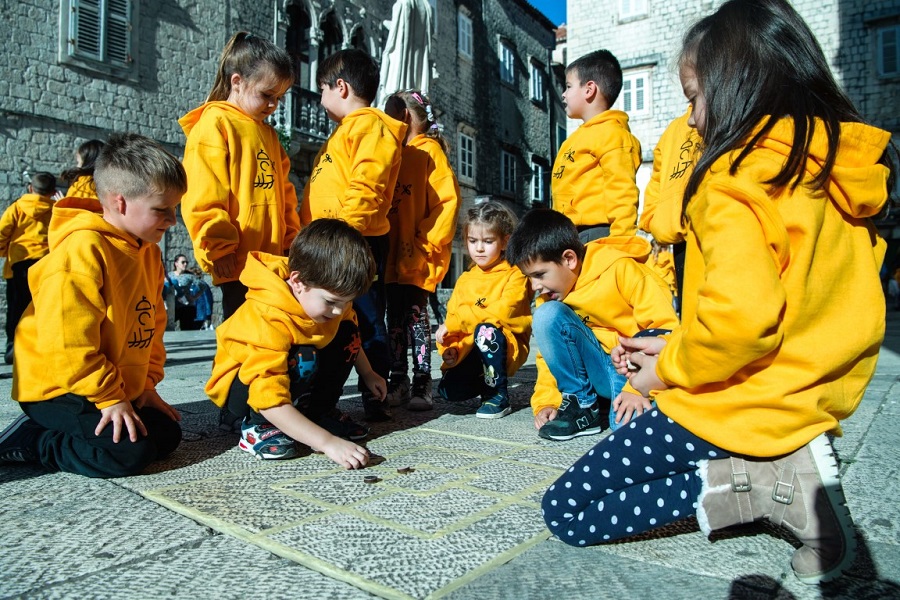
Among the many cool things that unforgettable day in Trogir was the sight of Trogir's young children playing traditional Dalmatian games in the streets and squares of that exquisite old town and UNESCO World Heritage Site (this one is called trilja, and it the basis of the new Trogir logo).
Tourism is in danger of losing its authenticity, and I personally think that if we can put the community back into tourism as it was just 15 years ago, everyone would benefit, as I wrote recently. What if we could revive and celebrate all these traditional Dalmatian games and bring them into one place for locals and tourists, learn about and compete in?
Why not have the Olympics of Traditional Dalmatian Games?
Walking around Trogir, I could imagine an event with locals and tourists competing in different Dalmatian games on different squares, bringing the whole town to life in a celebration of the region's heritage. And it would be a great opportunity to get the older generation involved.
Over lunch that day, I got chatting to a lovely couple dressed in traditional Dalmatian clothing. They had been married for almost 60 years and spoke with enthusiasm about Trogir in their childhood and the games they used to play. It got me thinking - if we could get the older generation involved with their memories, experiences, photographs etc. how much richer would the event be? And where better to hold such an event than Trogir.
I decided to post on Facebook, asking people to contribute any traditional Dalmatian games that they could remember from their village. The list so far is a little disorganised, but is a good basis. Not all of them can be turned into competitive sports, but certainly some can.
Are there any more? Send us some info (and which village/town it is played) to This email address is being protected from spambots. You need JavaScript enabled to view it. Subject Games, and let's see what else is out there and if we can organise a great alternative Olympics.
If you are interested in helping us take this idea forward, please contact me.
TRILJA
PLJOČKA
BALOTE
PIKE
PIKULE
ŠPEKULE
FRANJE
FEFA
ŠKOLICA
Zoga falo
LAŠTIK
MINČO
PLOJKE
BALINJERE
GURANJE KOLA OD BARILA
OBRUČ NA KLIN
Picigin
Trula kobila
Lovice
Frnje
Kušini
Ševa
Shalikurca
Papagalo koja ura ze
NA GUZE & MALE BRANKE
Na graničara
Koja je ura
Že Crna Marica jen', dva, tri!
Na slije (sličice)
Rampada
Balun o' ruke
Budget Winter Flights to Split: An Aviation Expert Offers His Thoughts
February 16, 2020 - TCN recently started a discussion on why there are no budget winter flights to Split, which got a lively response. And now we have an expert view to consider.
One of the many fabulous discoveries I made about Croatia in the last couple of years is a fantastic Swiss company called ch-aviation, which is the market leader in aviation data. Fantastic because their data and analysis has been a great source of information for me for stories about flights to Croatia, Montenegro and Serbia. And a fabulous discovery because they opened their main subsidiary office right here in Croatia, in Zagreb. And so successful have they been with their Croatian operation that they have expanded quickly, and continue to look for more talented young Croatian staff. You can read a TCN feature about ch-aviation here, and then check out their website.
The ch-aviation chaps have always been very obliging when I have asked for comment on an issue regarding the Croatian air industry, so having opened the topic about budget winter flights to Split, I thought it would be useful to get some expert thoughts. And here they are, courtesy of Chief Marketing Officer, Simonas Bartkus, for which many thanks:
Europe is by far the most seasonal continent in the world when it comes to air travel. It means there is massive demand in Summer, but the demand goes down in Europe-wide. I don‘t have exact numbers, but I believe Croatia is one of the most challenging countries in Europe when it comes to seasonality (everything connects to sea-coast tourism as a key purpose to travel to Croatia).
In Europe, most of the airlines are making their profits in summer. Even ultra-low-cost-airlines, like Ryanair or Wizz Air, announce quarterly losses when financial quarters includes winter months only. From time to time low-cost airlines report very thin positive margins, but mainly due to their smart capacity management (reducing in winter, planning all maintenance events and crew holidays in winter) and more business profile routes in their network.
Having said that, I should say, profitable operations in winter-only operations are not realistic from Split in winter. Nevertheless, every additional flight would be beneficial for local tourism and the economy. As the region has the infrastructure to serve loads of people in summer, the capacity is under-utilized in winter. It would make sense to the region (tourism authority, local businesses or local government) to subsidize routes, but the amount of the subsidies may be high: we could look at the numbers to subsidize 30% or even 50% of all the cost of the flights which may result in few millions of subsidies per route. At the same time, the long term development the subsidies will develop the traffic to the level it can sustain itself in the long term also is not very realistic, in my opinion.
Together with that, every subsidy creates a change in the competition environment. In winter, Croatia Airlines offers 86% of the capacity from Split Airport. The national airline is operating 3x daily flights to Zagreb which is subsidized by PSO mechanism in Croatia domestic airline network. Croatia Airlines also feeds Frankfurt and Munich with daily flights on their own commercial risk, feeding Lufthansa hubs and two largest Star Alliance hubs in Europe. Business travellers have an option to reach Split via Zagreb, Munich or Frankfurt in winter. If the new low-cost airline will be created in Split for winter operations, Croatia Airlines will become the one which will be hurt most, as I expect their routes SPU-ZAG, SPU-MUC and SPU-FRA serves connecting traffic mostly. This may result in the need to raise the subsidy required for SPU-ZAG or/and Croatia Airlines may decide to drop Frankfurt and Munich services for good.
So to say, I‘m quite pessimistic with the longterm sustainability of such a project. Nevertheless, there are some good examples in Europe, when Malta, Cyprus or provinces of Italy try to attract a limited amount of low-cost flights during winter with offering subsidies. But at the same time subsidies schemes should be smart not to destroy existing traffic.
For the latest flight news from Croatia, check out the dedicated TCN section.
'One Day or Day One' Croatian Tourism Conference Schedule Published
February 16, 2020 - The final schedule of the One Day or Day One #hrturizam2030 conference has been published, bringing together some of the top names of Croatian tourism's public and private sector.
I have never seen a conference organised from a conversation over a kitchen table to realisation before, and it has been really inspiring seeing the progress of Goran Rihelj and his indefatigable wife Mirjam to make 'One Day or Day One #hrturizam' a reality at Congress Centre Forum Zagreb on April 2.
Goran, of course, was the man whose initiative to bring Days of Croatian Tourism to Slavonia last year really put the spotlight on the potential of tourism in eastern Croatia. And now his #DayOne conference is bringing together key stakeholders in the public and private sector in Croatian tourism to focus on areas of agreement and cooperation to build a roadmap of progress for a better future for Croatian tourism.
The programme, which will be in both English and Croatian with simultaneous translation available, has now been published. Apart from the presentation by keynote speaker and acclaimed global tourism guru, Doug Lansky, there is bound to be great interest in the panel with Minister of Tourism Gari Cappelli and Croatian National Tourist Board Director, Kristjan Stanicic, discussing where they are aiming to get Croatian tourism to by 2030.
In addition to the speeches and panels, there will also be a gastro and wine show by celebrity chef Mate Jankovic and wine expert Sasa Spiranec.
And after a stimulating day, perhaps the most interesting part in terms of networking - Night One, the after-party, where there will the chance to mingle and network with the many progressive tourism professionals who will be attending, as well as meeting some of the speakers.
I am delighted that TCN is able to support #DayOne as media partners, as well as having the chance to present my own contribution, 5 Gifts Croatian Tourism is Ignoring, and How to Fix This. You can see my video message supporting the conference in the video above.
To reserve your tickets, visit the dedicated page on the HRTurizam website.
If you have any questions or need help from me, contact me on This email address is being protected from spambots. You need JavaScript enabled to view it.


